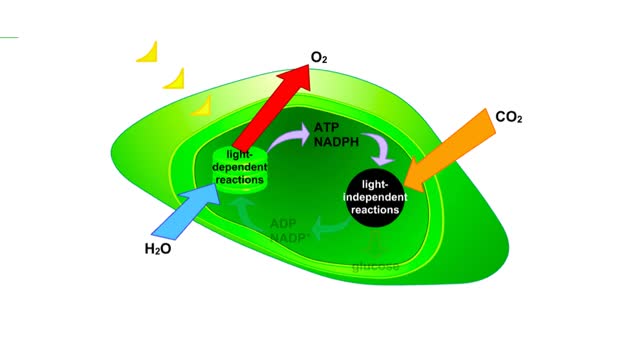Calvin cycle (The light-independent reactions )
By: HWC
Date Uploaded: 04/07/2020
Tags: homeworkclinic.com Homework Clinic HWC light independent reactions photosynthesis stroma chloroplast Calvin cycle ribulose bisphosphate molecule RuBISCO ribulose bisphosphate carboxylase carbon fixation
The light-independent reactions of photosynthesis occur in the stroma of the chloroplast. Carbon dioxide enters the leaf through tiny pores or stomata and diffuses into the chloroplast. The first stage of the Calvin cycle is the attachment of a carbon dioxide molecule to a 5-carbon ribulose bisphosphate molecule. This reaction is catalyzed by an enzyme called RuBISCO, which stands for ribulose bisphosphate carboxylase. It is the most abundant enzyme in nature. This process is called carbon fixation. The 6-carbon product of this carbon fixation reaction is so unstable that it exists for only a fraction of a second before it falls apart into two 3-carbon molecules of 3-phosphoglycerate (3PG). The second stage involves several reactions that add phosphate groups from ATP and hydrogens from NADPH. This is a chemical reshuffling of sorts and yields molecules of glyceraldehyde 3-phosphate (G3P). Some G3P can be removed from the cycle to form the 6-carbon glucose molecule. The remaining G3P molecules reform the starting molecule of ribulose bisphosphate and the cycle begins again. The Calvin cycle must make six complete turns in order to fix six carbon atoms into a new 6-carbon sugar molecule.
Add To
You must login to add videos to your playlists.
Advertisement












Comments
0 Comments total
Sign In to post comments.
No comments have been posted for this video yet.